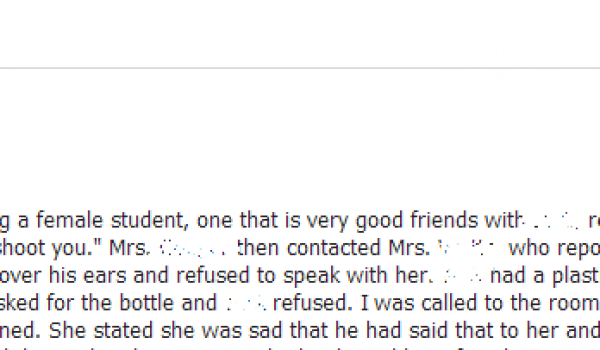
The Poisoner’s Handbook by Deborah Blum (Penguin Books 2010)
Deborah Blum’s page-turning book about the rise of real forensic science in New York City during the Jazz Age is mistitled. It’s not a do-it-yourself tome on how to use poison (legally or illegally) but rather a history of how one medical examiner, Charles Norris, working with a very talented toxicologist, Alexander Gettler, began to bring strong scientific principles to bear on determining how people died–specifically, how they died of poison.
I became aware of Ms. Blum’s book after watching a PBS American Experience show of the same name and on the same topic earlier this year. The author was interviewed extensively throughout the show, and, while it was a riveting hour of television, it left me wanting to know more. So I went in search of her book.
She’s a good writer who knows how to tell a story, and she sets the stage for her tale equally well. Prior to forensic science’s ability to determine the presence of toxic substances within a dead body, poison was a convenient problem solver for many a malevolent mind. So much so, in fact, that arsenic was dubbed “the inheritance powder.”
Eventually, scientists were able to conduct tests on tissues and organs that revealed deadly toxins in measurable quantities and helped point to those who might have administered them. But even as these scientific advances were marching forward, other obstacles to good criminal detection had to be overcome. Political corruption was one. Ms. Blum points out that, for many years, the position of medical examiner was a patronage job, given by politicians to favored friends. You didn’t even need to be a doctor to fill the position, and many who got it used it to line their pocketbooks–by accepting bribes in order to write a benign “cause of death” on a death certificate, by taking kickbacks from funeral homes to which they’d steer grieving family members of victims.
That began to change in New York City with the appointment of Charles Norris, a wealthy, ethical and determined doctor who then hired a man, Alexander Gettler, as toxicologist, who shared Norris’s ethos and work habits. Together, they began setting the standard for forensic work and police detection.
Ms. Blum organizes her story with chapters titled with poison names: mercury, chloroform, thallium, carbon monoxide, cyanide, and the inheritance powder itself, arsenic. She details how the poisons work on the body and then includes cases that Gettler and Norris worked on involving these poisons, often refining poison detection processes along the way. The individual cases are intriguing whodunnits, some of which have surprising denouements (such as one involving a man accused of poisoning his family with thallium, only to be exonerated by good detective/forensic work and the real culprit fingered).
Along the way, Ms. Blum also throws in a good amount of public safety history. In the days before the FDA regulated such things, poisons were regularly available, with no warnings as to their potential fatal consequences. In fact, many substances we know are explicitly harmful were touted as having life-enhancing qualities, leading to facial creams with arsenic in them, radium tonics, and even more dubious snake oil potions.
She opens readers’ eyes to why regulation of such substances was necessary. Not only were the items toxic, but often, businesses involved in their manufacture denied negative impacts to the point of delusion. In one incident, where workers were being poisoned into insanity by contact with an additive, tetraethyl lead (TEL), to gasoline, she recounts the story of Standard Oil’s rebuttal to concerns:
In answer to this new round of criticism, Standard Oil…brought (Thomas) Midgley, the TEL developer, to hold a press conference at its Manhattan offices. He assured reporters that handled properly there was nothing dangerous about his prize discovery. To prove it, he washed his hands in a bowl filled with TEL.
Eventually, unsafe TEL plants were closed or workers issued and ordered to use protective clothing. Mr. Midgley himself, Ms. Blum reports, went on an “extended European vacation” several months after his hand-washing press conference, “seeking treatment for the effects of lead poisoning.”
Another grim tale of corporate denial was the case of poor immigrant girls unknowingly poisoned by radium as they painted watch dials with the substance to make them glow in the dark. They’d often wet their brushes with their tongues to get a fine point, and this ingestion and exposure led to painful disability and ultimate death. Yet the company that hired them fought responsibility in court.
These and other incidents of businesses fighting regulation provide some useful context to today’s regulatory battles. That said, it’s hard not to have some sympathy for the company owners involved in these public safety debacles of the past. At a time when many poisons were used as “cures” and when Marie Curie herself carried around vials of radioactive isotopes in her skirt pockets to use in lectures, it’s easy to see how public safety concerns could be dismissed as alarmist jabbering. Madame Curie, by the way, eventually died of aplastic anemia, the disease that had claimed many of the radium-paint girls.
The government, however, has to take the prize for villainous behavior in this tale of poisonous activity. Ms. Blum points out that Norris and Tettler both regularly railed against Prohibition and its deaths due to wood alcohol poisoning, deaths that were surely increased as the government insisted on more and more poison being added to industrial alcohols to deter drinkers from using them as potable liquor.
Some online reviewers have criticized Ms. Blum for some sloppy scientific explanations here and there. For this nonscientist reader, those didn’t matter and weren’t the meat of the story anyway. Instead, the book is a very readable romp through forensic history, every bit as compelling as an episode of CSI.



